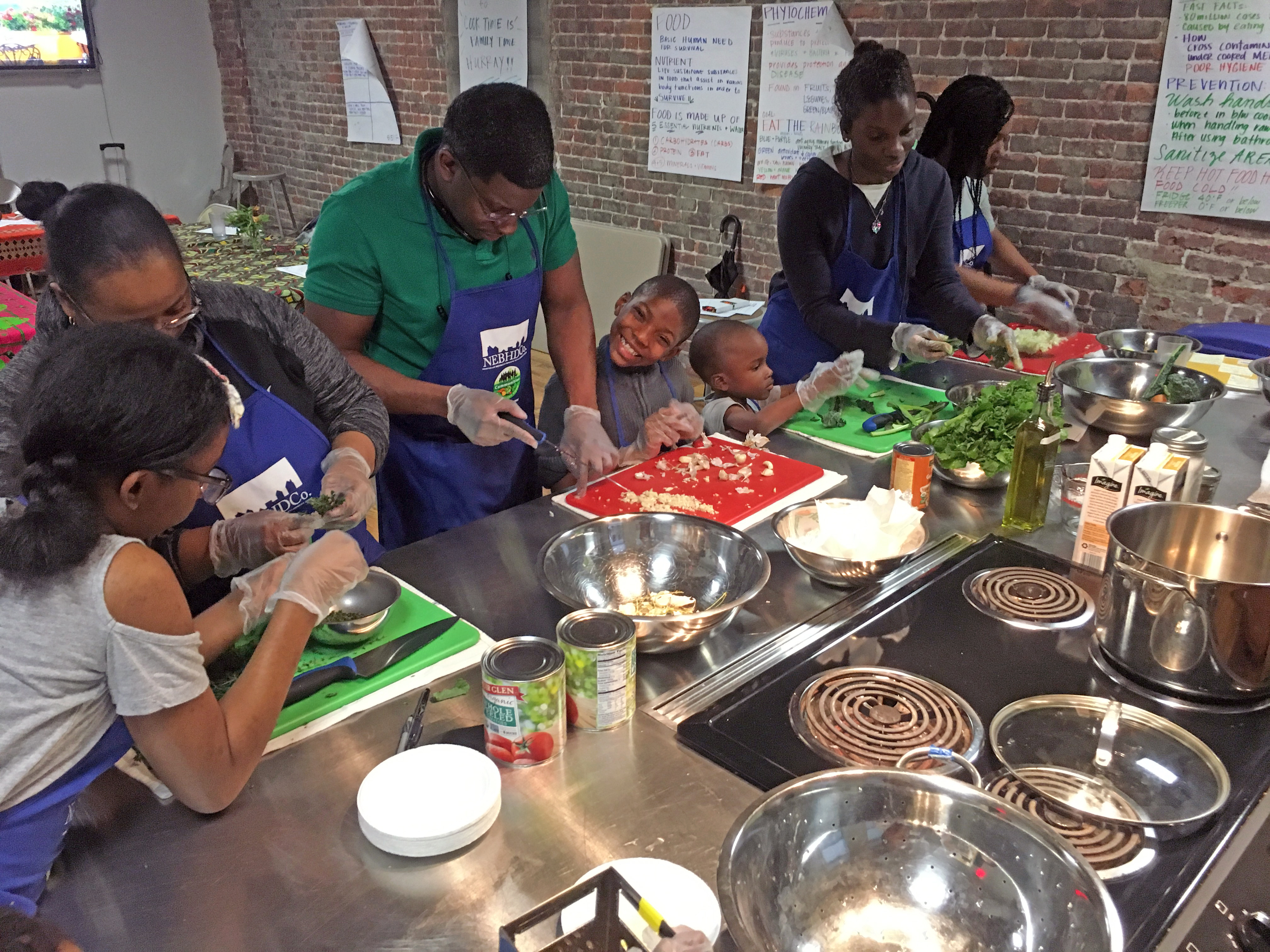Challenge: A Driver of Behavior Change for Healthy Eating Patterns

This is the second article in a new series to illuminate key ‘drivers of behavior change’ around healthful eating. After 20 years of designing, evaluating and retooling curriculum to increase successful behavioral outcomes among all ages, we have identified 10 distinct behavior drivers. We are currently investigating these 10 drivers in a new study in collaboration with Columbia University’s Teachers College, Program in Nutrition. Our goal is to open a new area in the scientific literature that illuminates successful delivery and communication techniques. Over time as other practitioners and researchers add to this body of research, we can achieve consensus about what constitutes effective Teaching Kitchen curriculum.
As all good educators know, students of any age get excited when they are challenged. Now I don’t necessarily mean doing trigonometry without a calculator. But I do mean challenging people to step outside their comfort zone. There’s no question that when it comes to food, the older people are, the MORE challenging it feels to try something they think they won’t like. I’ve watched 5 year olds taste seaweed, while the adults in the room all protested ‘Eeew!’
Challenging those who come to your Teaching Kitchen to go beyond their comfort zone must be approached carefully. When a toddler turns their nose at a new food, parents quickly become frustrated. But the savvy parents recognize that their little one has already gone through the oral stage — when EVERYTHING was explored by putting it in their mouths! Indeed, it’s a survival instinct that, once this oral stage has passed, young children begin to be very discerning about what goes in there. When we think of it like that, it’s a good thing, right?
So whether the ‘tough customer’ in your teaching kitchen is 4 or 49 years old, you have to aim to make the challenging experience of trying a new food fun and appealing. They will need coaxing through a specially designed experience and classroom dynamic that will suggest: 1) it won’t kill them to give it a try; and 2) tasting it can be an experience of new pleasure! In short: your class has to be all about deliciousness and enjoyment. Participants need to feel like the enjoyment of what was prepared is the icing on the cake – a big, tasty reward for their participation that day.
In our Cooking Time Is Family Time family cooking program, parents arrive with a lot of preconceived notions about their own taste preferences, as well as those of their children. It’s fascinating to watch as slowly over the course of the class, their stereotypes about their families’ taste preferences are broken down and both parents and children become more accepting, open and excited about the new foods. We challenge them to ‘jump in’ and do all the preparation steps with their kids — even while doubtful their kids will like or even taste the seasonal recipe we are making. Then, nine out of ten times, that coaching and pushing results in success — and even shock (from the parents). Families go home with a new conviction that they can model our techniques and have that success at home as well.
Challenge is an important part of life, at every age. In life and in teaching kitchens, challenge promises growth. Activate this powerful strategy to break down barriers, keep participants engaged in learning, and inspire their embrace of ‘trying new things’ —hungry for more of the magic that happens outside of our comfort zones.
To learn more about our evidence-based Teaching Kitchen programs, visit our Teaching Kitchen page or email me at lynn@familycookproductions.com.

